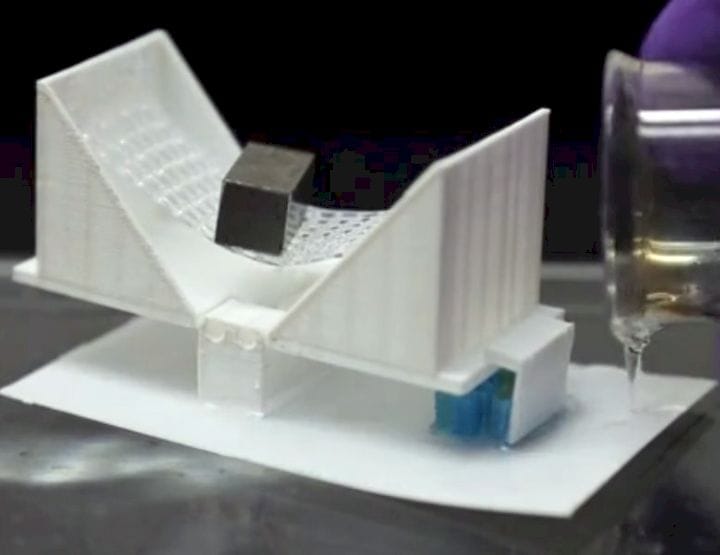![A sophisticated 3D printed venus flytrap device [Source: University of Pennsylvania]](https://fabbaloo.com/wp-content/uploads/2020/05/image-asset_img_5eb09e666ccca.jpg)
Some very intriguing research suggests it may be possible to 3D print “smart” objects.
Researchers at the University of Pennsylvania have been working on highly sophisticated forms of metamaterial 3D printing that have resulted in seemingly “smart” objects.
Let’s back up a bit here. Metamaterials are a form of geometric design whose shape itself can provide a simple function. For example, you could imagine a shape that might get more rigid if you were to twist it. There are no limits to the potential designs possible using a meta materials approach.
That must have attracted the UP researchers, who used metamaterial design principles to create the physical equivalent of logic gates. Logic gates are used every day by everyone in the form of transistors embedded within processors. Deep inside, these logic gates are what powers the “smartness” of every smart object the world today.
But what if you were to design a metamaterial that acts like a logic gate? Science Daily explains:
“Using multi-material 3D printers, the researchers can make these active structures with nested if/then logic gates, and can control the timing of each gate, allowing for complicated mechanical behaviors in response to simple changes in the environment. For example, by utilizing these principles an aquatic pollution-monitoring device could be designed to open and collect a sample only in the presence of an oil-based chemical and when the temperature is over a certain threshold.”
This is quite amazing. These devices would have no control systems, no wiring, no motors; they just have the inherent engineering properties of the materials embedded in their geometry. They have been arranged in a highly sophisticated way to exhibit the desired logical behavior.
How exactly does this work? How can you make a logic gate? Again, Science Daily explains:
“The researchers’ solution was to infuse their 3D-printed structures with glass or cellulose fibers, running in parallel to the length of the beams. Like carbon fiber, this inelastic skeleton prevents the beams from elongating, but allows the space between the fibers to expand, increasing the beams’ width.
With this geometric control in place, more sophisticated shape-changing responses can be achieved by altering the material the beams are made of. The researchers made active structures using silicone, which absorbs oil, and hydrogels, which absorb water. Heat- and light-sensitive materials could also be incorporated, and materials responsive to even more specific stimuli could be designed.”
Could this lead to intelligent 3D prints? Certainly not anytime soon, but the possibility of increasingly smart prints is now quite real.
If one can employ logic gates in a 3D print then who knows what might be possible. This is clearly an area that must receive significant scientific exploration to see what might be possible.
Via Science Daily











A research thesis details the incredibly complex world of volumetric 3D printing. We review the highlights.